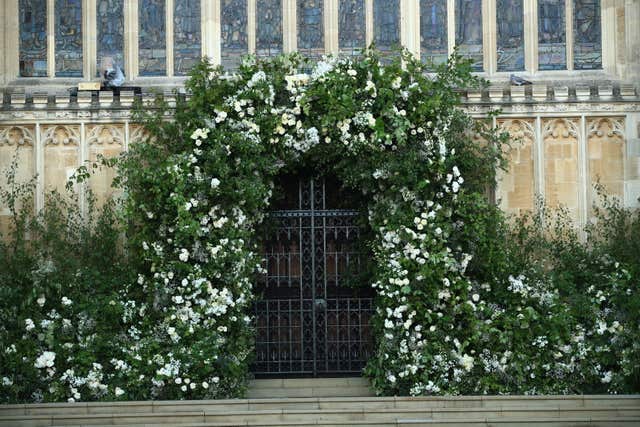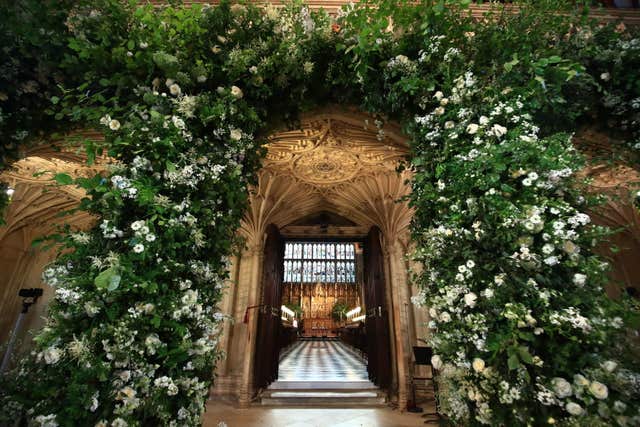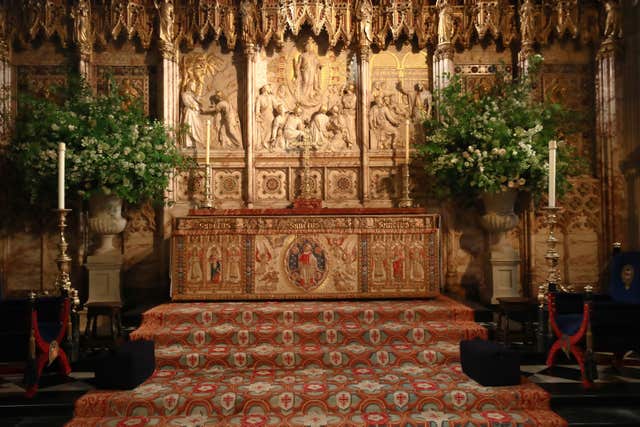Royal wedding flowers shared out to charities
The wedding displays were set out at St George’s Chapel and St George’s Hall in Windsor.
The beautiful flowers which graced the royal wedding have been shared out to different charities.
Former embroideress Pauline Clayton, 89, a patient at St Joseph’s Hospice in Hackney, east London, described the gift from the Duke and Duchess of Sussex as “lovely”.
Hospice officials discovered by chance that Mrs Clayton used to work for the Queen’s dressmaker Sir Norman Hartnell, when they chatted to her after the royal wedding.

The flowers were admired by the staff, volunteers and visitors as they were shared out among the patients and placed in the chapel.
Speaking from her room at the hospice where she is receiving respite care, Mrs Clayton said: “If I was her (Meghan) I would have wanted to keep them all with me.”

Mrs Clayton said she worked on the skilled and fine detail embroidery on the Queen’s wedding and coronation outfits.
Floral designer Phillippa Craddock directed a team, including florists from St George’s Chapel and Buckingham Palace, to create the wedding displays at St George’s Chapel and for St George’s Hall in Windsor.

These included branches of beech, birch and hornbeam, as well as white garden roses, peonies and foxgloves.
Father Peter-Michael Scott, the hospice’s lead chaplain, felt the flowers were a special gift from the royal couple and noted they had already made several people at the hospice smile.
He said: “It (the flowers and the ceremony) connects with a celebration of love and life and in the midst of all that, this newly married couple have been thinking of others and are demonstrating that by donating to others.
Mrs Clayton said she was 19 when she worked for 49-and-a-half hours on the train of Queen’s wedding dress.
Only half-joking, she recalled: “To a certain extent it was exciting and my dad was over the moon. I could not say anything to anybody or else I could have been prosecuted or something at the end of the day.”
She remembered working on the design, shrouded in secrecy, in Bruton Mews near Sir Norman’s extraordinary salon in Bruton Street, in the heart of London’s West End. She recalled that “people used to try to rent the rooms in the pub opposite to try to see what we were doing.”
The Royal Collection Trust notes that the Queen also requested that in addition to the four national emblems, those of the Dominions of which she was now Queen should also be added to her coronation dress.
Mrs Clayton said she worked on the embroidery for lotus flower of Ceylon, which later became Sri Lanka, which appeared on the coronation dress.
Meghan wore a five metre-long white silk veil at her wedding which included floral detail representing all 53 countries of the Commonwealth.
The bride suggested the design because the Commonwealth will be a central part of the official work that she and Harry are set to carry out.





